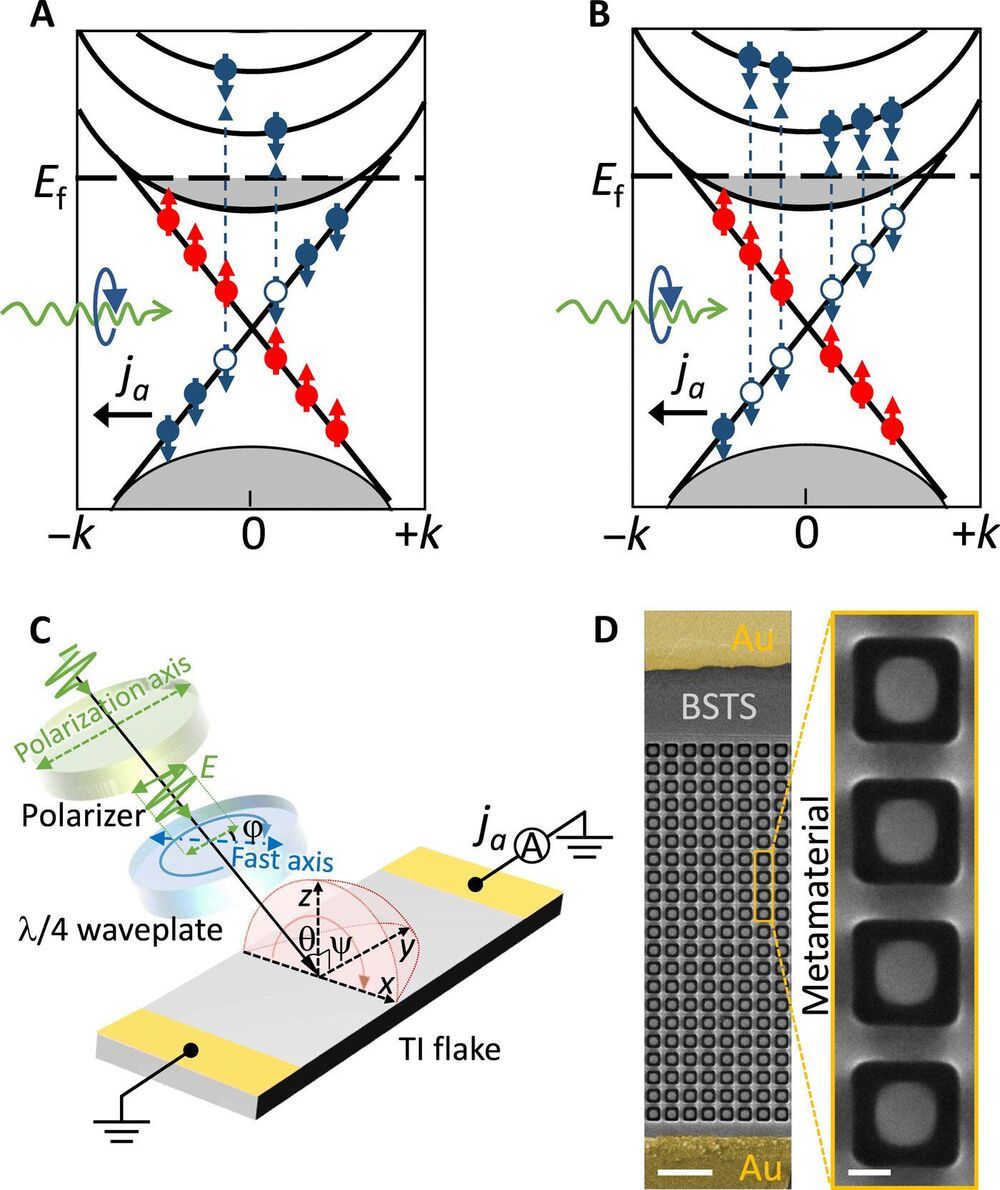Topological insulators have notable manifestations of electronic properties. The helicity-dependent photocurrents in such devices are underpinned by spin momentum-locking of surface Dirac electrons that are weak and easily overshadowed by bulk contributions. In a new report now published on Science Advances, X. Sun and a research team in photonic technologies, physics and photonic metamaterials in Singapore and the U.K. showed how the chiral response of materials could be enhanced via nanostructuring. The tight confinement of electromagnetic fields in the resonant nanostructures enhanced the photoexcitation of spin-polarized surface states of a topological insulator to allow an 11-fold increase of the circular photogalvanic effect and a previously unobserved photocurrent dichroism at room temperature. Using this method, Sun et al. controlled the spin transport in topological materials via structural design, a hitherto unrecognized ability of metamaterials. The work bridges the gap between nanophotonics and spin electronics to provide opportunities to develop polarization-sensitive photodetectors.
Chirality
Chirality is a ubiquitous and fascinating natural phenomenon in nature, describing the difference of an object from its mirror image. The process manifests in a variety of scales and forms from galaxies to nanotubes and from organic molecules to inorganic compounds. Chirality can be detected at the atomic and molecular level in fundamental sciences, including chemistry, biology and crystallography, as well as in practice, such as in the food and pharmaceutical industry. To detect chirality, scientists can use interactions with electromagnetic fields, although the process can be hindered by a large mismatch between the wavelength of light and the size of most molecules at nanoscale dimensions. Designer metamaterials with structural features comparable to the wavelength of light can provide an independent approach to devise optical properties on demand to enhance the light-matter interaction to create and enhance the optical chirality of metamaterials. In this work, Sun et al.










Comments are closed.